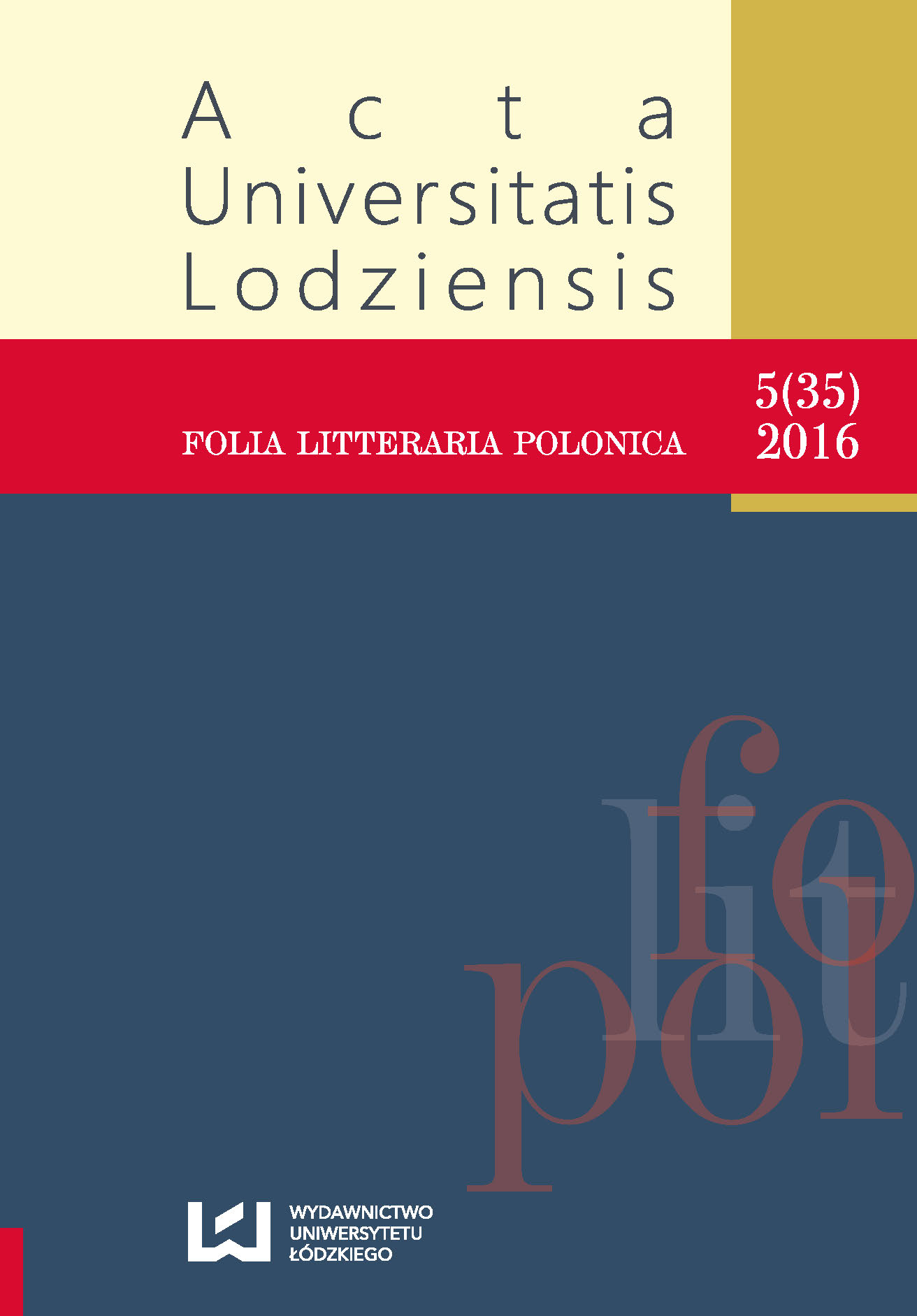Hate Speech in Media Discourse
DOI:
https://doi.org/10.18778/1505-9057.35.02Słowa kluczowe:
hate speech, media, media ethics, hate, speechAbstrakt
This article is an attempt to seek answers to the question of whether so-called hate speech in the media constitutes a reporting of facts and reflects real social and cultural life or pursues other aims, for example: the persuasive and manipulative creation of a desired reality innate in the functioning of a commercial and persuasive media. The author attempts from the axiological perspective of the media, as well as from the semiological and linguistic perspectives, to answer the question of what the role of media language is in shaping and promoting real attitudes of hostility and hatred, and conversely, how cultural and media tendencies shape hate speech in the media. The author does not analyse the material aspect of language, but rather tries to look critically at certain trends shaping new forms of media language that bear negative values.
Pobrania
Bibliografia
Babolin S., “Produzione di senso, Hortus Conclusus”, Rome 1999.
Google Scholar
CBOS, „Społeczna percepcja przemocy i mowy nienawiści. Komunikat z badań”, http://www.cbos.pl/-SPISKOM.POL/2007/K_074_07.PDF [access: 14.06.2015].
Google Scholar
Drożdż M., „Logos i ethos mediów. Dyskurs paradygmatyczny filozofii mediów”, Wydawnictwo Diecezji Tarnowskiej Biblos, Tarnow 2005.
Google Scholar
Drożdż M., „Media. Teorie i fikcje”, Wydawnictwo Jedność, Kielce 2005.
Google Scholar
Drożdż M., „Osoba i media. Personalistyczny paradygmat etyki mediów”, Wydawnictwo Diecezji Tarnowskiej Biblos, Tarnow 2005.
Google Scholar
Iłowiecki M., „Pilnowanie strażników. Etyka dziennikarska w praktyce”, Fronda PI, Warsaw 2012.
Google Scholar
Jan Paweł II, „Homilia wygłoszona w czasie Mszy św. w Olsztynie, 6 czerwca 1991 roku”, in: Jan Paweł II, „Pielgrzymki do Ojczyzny. Przemówienia i homilie”, 3. ed., Wydawnictwo Znak, Cracow 2005.
Google Scholar
Jan Paweł II, „Prawdziwi chrześcijanie i znakomici dziennikarze”, http://www.opoka.org.pl/biblioteka/W/WP/jan_pawel_ii/przemowienia/dziennikarze_04062000.html [access: 20.09.2006].
Google Scholar
Kowalski S., Tulli M., „Zamiast procesu. Raport o mowie nienawiści”, W.A.B., Warsaw 2003.
Google Scholar
Orliński W., „Wolność słowa, także kłamliwego”, Gazeta Wyborcza 2006, 1.03, p. 19.
Google Scholar
Papieska Rada ds. Środków Społecznego Przekazu, „Etyka w mediach”, Vatican City 2000, No. 23.
Google Scholar
Postman N., „Das Zeitalter des Showbusiness”, in: „Kursbuch Medienkultur. Die maßgeblichen Theorien von Brecht bis Baudrillard”, ed.. C. Pias, J. Vogl, L. Engell, O. Fahle, B. Neitzel, DVA, Stuttgart 2000, pp. 223–233.
Google Scholar
Postman N., Zabawić się na śmierć. Dyskurs publiczny w epoce show-businessu”, transl. L. Niedzielski, Wydawnictwo Muza, Warsaw 2002.
Google Scholar
Pobrania
Opublikowane
Jak cytować
Numer
Dział
Licencja

Utwór dostępny jest na licencji Creative Commons Uznanie autorstwa – Użycie niekomercyjne – Bez utworów zależnych 4.0 Międzynarodowe.











